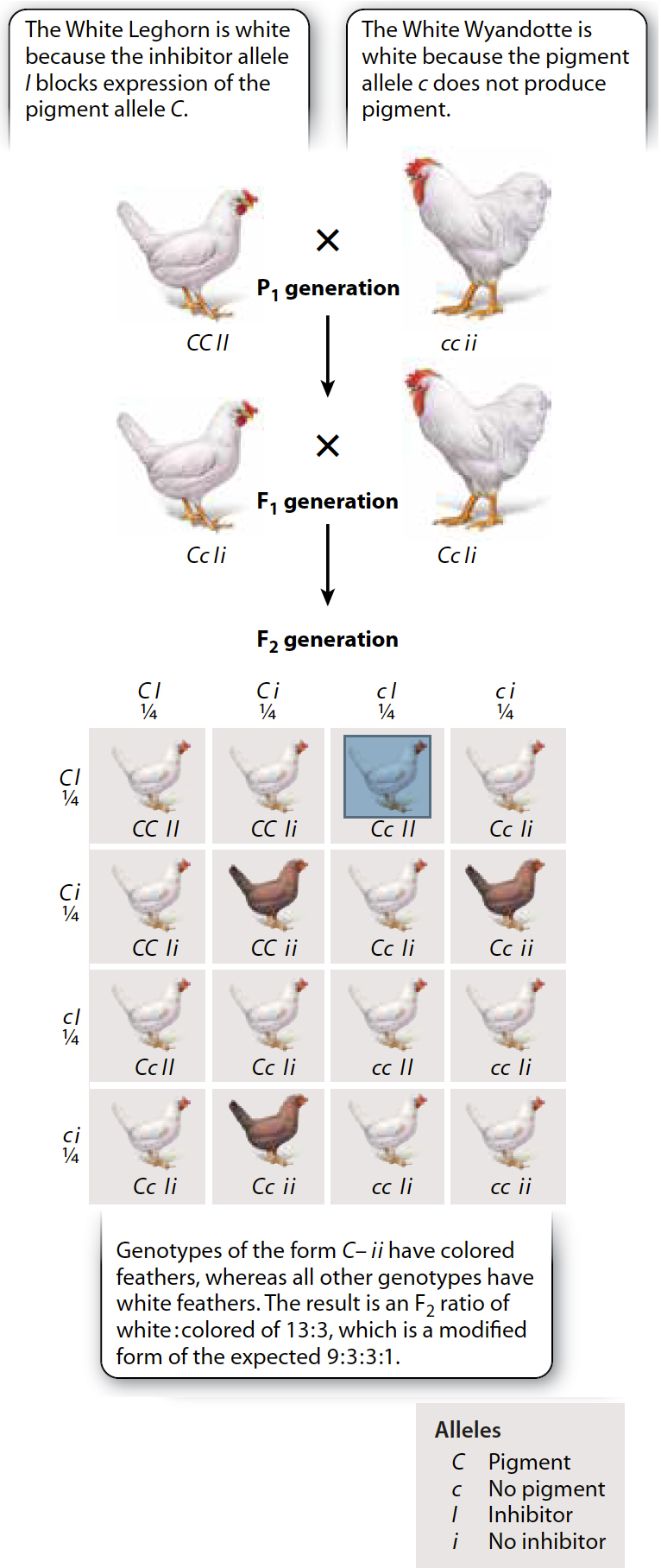Phenotypic ratios can be modified by interactions between genes.
The 9:3:3:1 ratio results from independent assortment of two genes when one allele of each gene is dominant and when the two genes affect different traits. However, even with complete dominance, the ratio of phenotypes may be different if the two genes affect the same trait. This often happens when the genes code for proteins that act in the same biochemical pathway. In such cases, the gene products can interact to affect the phenotypic expression of the genotypes, resulting in a modification of the expected ratio. Genes that modify the phenotypic expression of other genes are said to show epistasis.
339
There are many types of epistasis leading to different modifications of the 9:3:3:1 ratio. Among the more common modified ratios are 12:3:1, as well as 9:3:4 and 13:3. Fig. 16.16 shows one example, in which the F2 generation of a cross between White Leghorn and White Wyandotte chickens displays the modified ratio 13:3. Both breeds are white, but for different genetic reasons. There are two genes involved in pigment production, each with two alleles. The C gene encodes a protein that affects coloration in feathers. The dominant allele C produces pigment, and the recessive allele c does not produce pigment. A different gene, I, codes for an inhibitor protein. The product of the dominant allele, I, inhibits the expression of C, whereas the recessive allele, i, does not produce the inhibitor and so does not inhibit the expression of C. Therefore, the White Leghorn (genotype CC II) is white because the product of the dominant allele I inhibits the pigment in the feathers, and the White Wyandotte (genotype cc ii) is white because the recessive allele c does not produce feather pigment to begin with. The F1 generation has genotype Cc Ii and is also white. With independent assortment, only the three C–

Quick Check 5 Why do the F1 chickens with genotype Cc Ii have white feathers?
Quick Check 5 Answer
The F1 chickens have white feathers because the dominant inhibitor allele I inhibits expression of the pigment allele C.